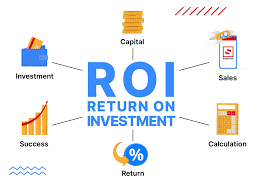Financial analytics tools are essential for any business looking to gain valuable insights from its financial data. With the right tool, you can unlock the full potential of your financial information and make informed decisions that will propel your business forward. In this blog post, we’ll explore what these tools are and how they can be used to maximize their value. We’ll also discuss some of the best financial analytics tools available on the market today.
Introduction to Financial Analytics Tools
Financial analytics tools are essential for unlocking the value of data. They help organizations make better decisions by providing insights into trends, risks, and opportunities.
There are a variety of financial analytics tools available, each with its own strengths and weaknesses. The best tool for an organization depends on its specific needs and goals.
Some of the most popular financial analytics tools include:
– Tableau: A visual analysis tool that helps organizations see and understand data.
– Qlik Sense: A self-service data visualization tool that enables users to create their own dashboards and reports.
– IBM Cognos Analytics: A powerful business intelligence platform that offers a wide range of features and capabilities.
– Microsoft Power BI: A cloud-based business intelligence service that provides interactive visualizations and insights.
Benefits of Using Financial Analytics Tools
There are many benefits of using financial analytics tools. Here are some of the most important ones:
1. Improve decision-making: Financial analytics tools can help you make better decisions by providing you with insights that you would not have otherwise had.
2. Save time: These tools can save you a lot of time by automating tasks such as data collection and analysis.
3. improve accuracy: Financial analytics tools can help improve the accuracy of your financial data and analysis.
4. Reduce costs: Using these tools can help you reduce your costs by helping you avoid mistakes and unnecessary work.
5. Improve efficiency: Financial analytics tools can help improve your overall efficiency by automating tasks and providing you with insights that you would not have otherwise had.
Types of Financial Analytics Tools
There are many different types of financial analytics tools available to businesses today. Each has its own strengths and weaknesses, so it’s important to choose the right one for your needs. Some of the most popular financial analytics tools include:
1. Business Intelligence (BI) Tools: BI tools help businesses track, analyze, and visualize data. They can be used to monitor financial performance, identify trends, and make predictions. Popular BI tools include Tableau, QlikView, and Microsoft Power BI.
2. Data Visualization Tools: Data visualization tools help businesses visually understand data sets. They can be used to create charts, graphs, and other visual representations of data. Popular data visualization tools include D3.js and Tableau Public.
3. Financial Modeling Tools: Financial modeling tools help businesses build models to simulate financial scenarios. These models can be used to test investment strategies, assess risk, and make decisions about real-world financial situations. Popular financial modeling tools include Crystal Ball and @RISK.
4. Spreadsheet Software: Spreadsheet software like Microsoft Excel is a staple in many businesses’ financial analysis toolkits. Spreadsheets can be used for everything from tracking expenses to creating complex financial models.
5. Statistical Analysis Software: Statistical analysis software helps businesses analyze data sets and find relationships between variables. This type of software is often used in conjunction with other analytics tools to help identify trends and make predictions. Popular statistical analysis software includes
How To Use Financial Analytics Tools?
If you want to improve your financial decision-making, you need to start using financial analytics tools. Whether you’re a small business owner or a corporate finance executive, these tools can help you make better decisions about where to allocate your resources.
But with so many different financial analytics tools available, it can be hard to know where to start. That’s why we’ve put together this guide on how to use financial analytics tools. We’ll show you how these tools can help you make better decisions and we’ll also recommend some of the best ones available.
So, if you’re ready to learn more about financial analytics tools, let’s get started!
What Are The Best Financial Analytics Tools?
Financial analytics tools are a dime a dozen nowadays. But which ones are the best? And how can you use them to unlock the value of your data?
In this blog post, we’ll take a look at some of the best financial analytics tools available today. We’ll also explore how you can use them to get the most out of your data.
So, without further ado, let’s get started!
The first tool on our list is Tableau. Tableau is a powerful data visualization tool that lets you see your data in new and insightful ways. With Tableau, you can quickly and easily create beautiful visualizations that reveal hidden patterns and trends in your data.
If you’re looking for a tool that can help you make better decisions about your finances, Tableau is a great choice.
The second tool on our list is Microsoft Excel. Excel is a versatile tool that can be used for a variety of purposes, including financial analysis. With Excel, you can track your spending, create budgets, and even run complex financial models.
If you’re looking for a tool that’s both powerful and user-friendly, Excel is a great choice.
The third tool on our list is RStudio. RStudio is a popular open-source statistical programming language that’s widely used by statisticians and data scientists. With RStudio, you can perform complex statistical analyses and create sophisticated visualizations of your data.
Recommended Resources
There are a number of financial analytics tools available on the market, each with its own strengths and weaknesses. In order to get the most out of these tools, it is important to understand how to use them and what the best ones are for your specific needs.
One of the most popular financial analytics tools is Microsoft Excel. Excel has a wide range of features that make it ideal for financial analysis, including powerful formulas, data visualization capabilities, and much more. However, Excel can also be complex and difficult to use for those who are not familiar with its features.
Another popular financial analytics tool is Tableau. Tableau is a data visualization tool that makes it easy to create beautiful and informative visualizations of your data. However, like Excel, Tableau can also be complex and difficult to use for those who are not familiar with its features.
Finally, there is DotNetReport. DotNetReport is an ad hoc reporting software that allows users to create, schedule, and email reports from various data sources. This exciting new tool provides a wealth of options for users looking to get the most out of their data. With DotNetReport, they can easily create custom reports and email them on a schedule of their choosing. Additionally, DotNetReport supports multiple data sources, so users can easily pull in data from a variety of different places. This makes it an essential tool for anyone who needs to report on data from multiple sources.
No matter which financial analytics tool you choose, it is important to spend some time learning how to use it properly in order to get the most out of it.
Conclusion
Financial analytics tools can be a great way to unlock the value of your financial data. With the right tool, you can easily analyze and interpret your financial data in order to make informed decisions. We hope that this article has given you insight into what these tools are and how they can help you make better decisions regarding your finances. Now that you know more about these tools, it’s time to start looking for the best ones available and get started with using them to boost your company’s bottom line!




